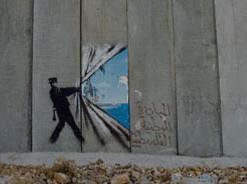The Art and Commerce of Killing Just Enough People

Eyal Weizman is an architect who has worked and taught in Palestine, Tel Aviv and London, where his practice has to deal with both the practical and political meaning of pine trees and olive trees. And also, he has to deal with destruction, as do we all, as he describes in this interview: “There is a category in international humanitarian law called proportionality. It’s a calculation that assumes an economy of violence. Within that economy, the military and the NGOs tend to engage in bargaining. They say, no, that needs to be cheaper. And some people say, no, that needs to be more expensive, right? But they operate within the same market, so to speak. Too many civilians are being killed; too few civilians are being killed. To establish that, you need to undertake calculations. When you need to establish a threshold number of civilian casualties — Garlasco was asked to limit these to twenty-nine per bombing mission — this more or less abstract economy is transferred into an engineering problem: How much of the building should be destroyed? What is the minimum bomb to do that? If there was no threshold, he’d just choose a big-enough bomb to destroy the whole building. Instead, he needed to destroy two stories above, or part of a story — it is a craft, to design the destruction: the design of ruins.”
